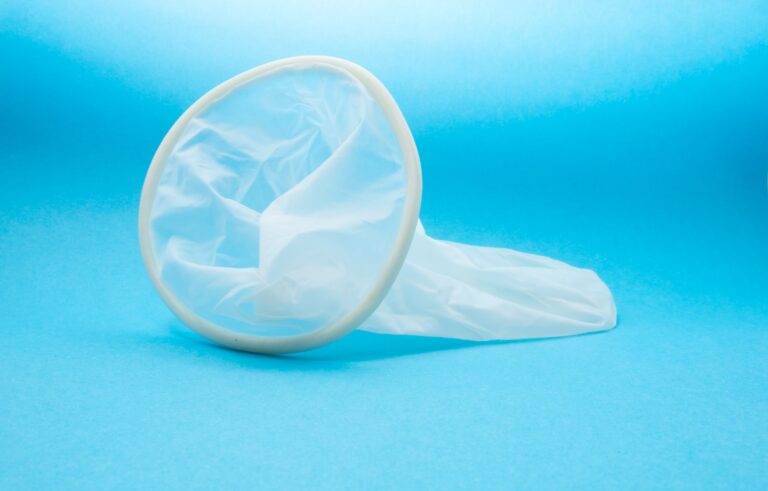The main challenge with condom catheters is irritation caused by the affixing tape or adhesive on the penis. This can lead to skin breakdown, scarring and even penile ulcers.
Another challenge is making sure the tubing is properly attached to the glans of the penis and that it doesn’t get dislodged or kinked. This can be a case of trial and error for the nursing team.
The Condom
A condom catheter is a device that looks just like a regular male condom. The difference is it has a hole at the tip for draining urine. It is worn over the penis and connects to a tube that goes to a collection bag that is worn on the leg. Urine passes through the condom catheter and into the collection bag, which is emptied periodically. This type of catheter is less invasive than internal catheters and can be used by a client without the help of a health care professional at home.
Nursing challenges in the use of a condom catheter include finding the right size and applying it properly. It is essential to find the correct sizing as a loose catheter may become dislodged, and a tight catheter can cause penis necrosis by reducing local blood supply.
It is also important to check the skin regularly around the catheter for irritation, redness, and breakdown. This can be a challenge in people who cannot move easily on their own or have a condition such as dementia that prevents them from being able to manage this task. It is also important to empty the collection bag regularly and change the catheter every day to avoid infection. To remove the catheter, a person should pull the tape off and gently roll it down the shaft of the penis. Then, they should disconnect the tubing from the sheath holder and cap it. Finally, they should wash their hands, practice hand hygiene, and put on clean gloves.
The Tube
A condom catheter (also called an external urinary catheter or indwelling catheter) looks a bit like a regular condom but has a hole at the tip of the penis (not something I’m recommending for contraception). It is then connected to a tube that drains urine into a collection bag worn on the leg.
Men with severe urinary incontinence are often good candidates for a condom catheter because it is less painful than an internal bladder catheter. The main advantages are that it is noninvasive — meaning nothing gets inserted into the body — and that it can be used at home without the need for medical staff to change it.
It also causes fewer catheter-associated urinary tract infections and may cause less damage to the urethra than an indwelling bladder catheter does. Men often find that they are able to use and change the catheter on their own with a little practice.
There are some challenges that come with using a condom catheter, though. One is making sure it’s properly sized. Unless it’s snug enough, the catheter might slip off or become infected. Another is ensuring the tube is properly secured to promote free flow of urine and avoid backflow. And, lastly, ensuring that the collection bag is properly emptied and cleaned at least every 24 hours.
The Collection Bag
Unlike Foley catheters, which are inserted directly into the urethra, condom catheters are not invasive. Men with urinary incontinence can use these devices to avoid urine leaks that would otherwise cause accidents. Rather than absorb liquids, these devices collect urine in a tubing that is attached to a bag strapped around the leg.
Using a condom catheter is easy enough for most men to manage on their own. Start by cleaning the penis and area surrounding it with soap and water. Then, put on the self-adhesive catheter and clip any hair that could get caught as the device is rolled onto the penis. Some men may prefer to wear briefs that have a special pouch to hide the catheter connections.
The next step is to connect the collection tube to the condom catheter. Then, place the bag in a comfortable position on your leg (below the knee). Make sure there is plenty of slack in the tube so it will not pull when you move your legs.
Finally, secure the tubing to your leg using the catheter leg strap that came with the kit. Check and empty the urine bag regularly. It should only be half full to prevent discomfort. Once it is empty, drain the urine into a toilet or other suitable container. It is important to keep the penis and the tubing clean to avoid skin irritations, local infections and other complications.
The Drainage Tubing
A condom catheter (also known as a sheath catheter) fits over the penis like a condom, but has a tube that goes to a collection bag strapped to the leg. It is one of the most efficient ways for certain men to manage their urinary incontinence needs.
It is easy to use and change and can reduce infections compared to other catheters, since it doesn’t enter the bladder. It is more comfortable than pads, which can cause soreness and irritated skin. And it is more discreet than a urinary catheter inserted into the urethra.
Before applying the catheter, make sure it is the correct size. A sheath that is too small could compress or traumatize the urethra, causing infection or bleeding. A sheath that is too large may slip off or leak.
The insertion site should be clean and free of dirt, bacteria, or fungus. Use a clean cotton swab dipped in soapy water to clean the area 3 or 4 times a day. If you notice redness greater than the size of a dime, swelling, odor, heat, pus, or pain around the insertion site, call your healthcare provider.
After the procedure, remove the catheter and sheath and cap the tubing. Clean the area and put on a new pair of gloves. Throw the used gloves in the trash bag.
See Also:



